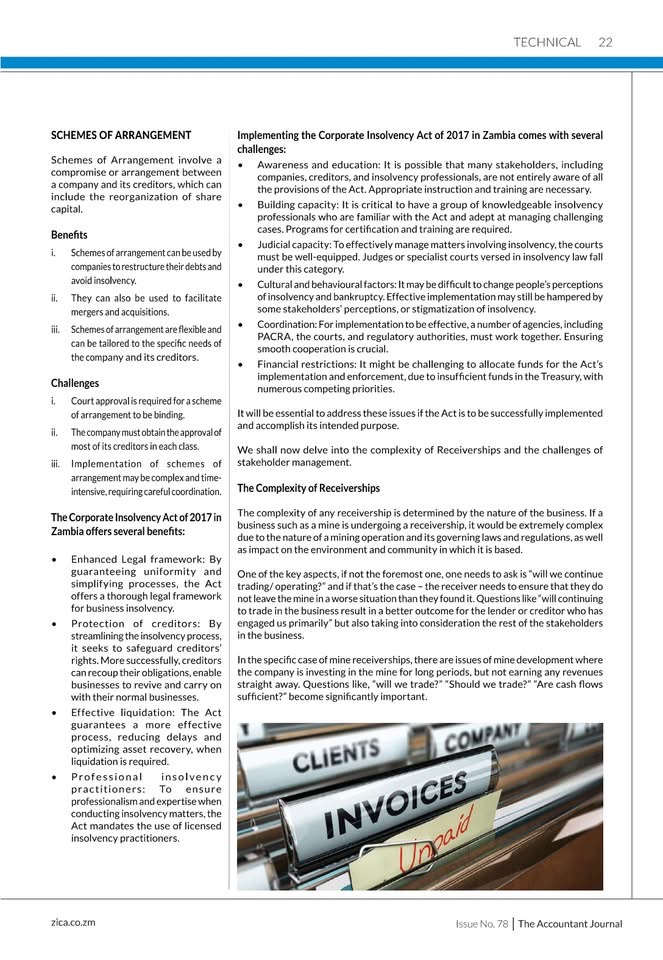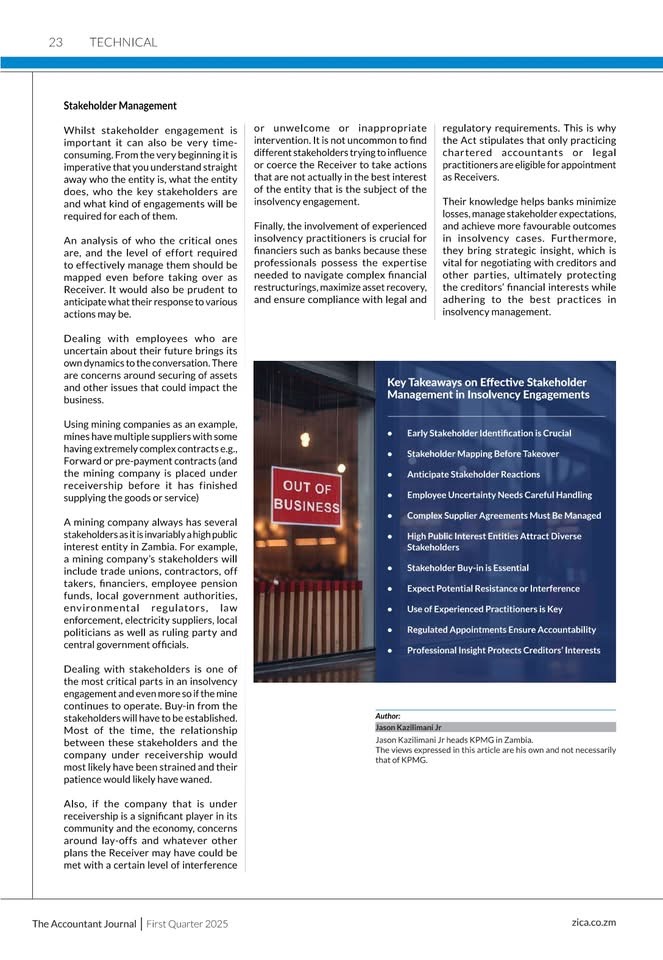𝗧𝗛𝗘 𝗜𝗡𝗦𝗢𝗟𝗩𝗘𝗡𝗖𝗬 𝗟𝗔𝗡𝗗𝗦𝗖𝗔𝗣𝗘 𝗜𝗡 𝗭𝗔𝗠𝗕𝗜𝗔
3 JUNE 2025 : 12:00AM
Jason Kazilimani Jr (Country Managing Partner, KPMG Zambia)
The Corporate Insolvency Act No. 9 of 2017 (“the Act”) is Zambia’s first stand-alone insolvency legislation. It establishes a regulatory scheme for insolvency practitioners who are required to be licensed by the Patents and Companies Registration Agency (PACRA). The Act provides for various insolvency procedures, such as administration, receivership, liquidation, and schemes of arrangement.
It is “An Act to provide for corporate receiverships, appointment of receivers and the duties and responsibilities of receivers; business rescue, appointment, duties and responsibilities of business rescue administrators, rights of affected persons during business rescue proceedings and business rescue plans; schemes of arrangements or compromise with creditors; winding up of companies, appointment of liquidators and the duties and responsibilities of liquidators, committees of inspection, special managers and the Official Receiver; insolvency practitioners and the duties and responsibilities of insolvency practitioners; cross-border insolvency; and matters connected with, or incidental to, the foregoing.”
The following sections explore the benefits and challenges associated with selected insolvency procedures under the Act.
𝗥𝗘𝗖𝗘𝗜𝗩𝗘𝗥𝗦𝗛𝗜𝗣
Receivership is the process of a disinterested individual being appointed for a corporate or other person to protect or collect property that is subject to diverse claims or litigation.
𝗕𝗲𝗻𝗲𝗳𝗶𝘁𝘀
i. A secured creditor can enforce a charge over the property of a company by applying to the court to appoint a receiver.
ii. A receiver is entitled to payment, which is a percentage of the proceeds of the receivership. The court may fix the amount of remuneration for the receiver
Source: 𝗧𝗵𝗲 𝗔𝗰𝗰𝗼𝘂𝗻𝘁𝗮𝗻𝘁 | 𝘡𝘢𝘮𝘣𝘪𝘢’𝘴 𝘈𝘤𝘤𝘰𝘶𝘯𝘵𝘢𝘯𝘤𝘺 𝘑𝘰𝘶𝘳𝘯𝘢𝘭 | Issue No: 78
Featured Image
2025-06-03
Category: Economic and Business Sectors


